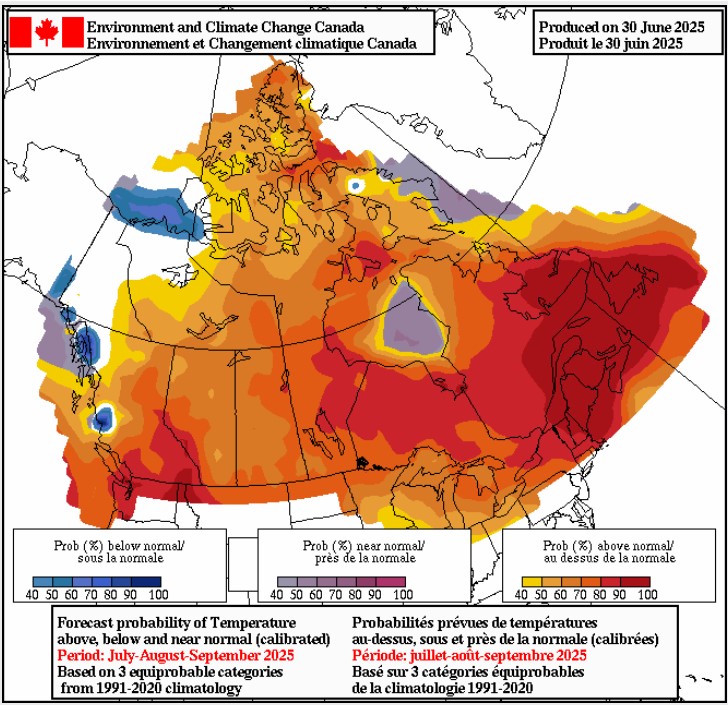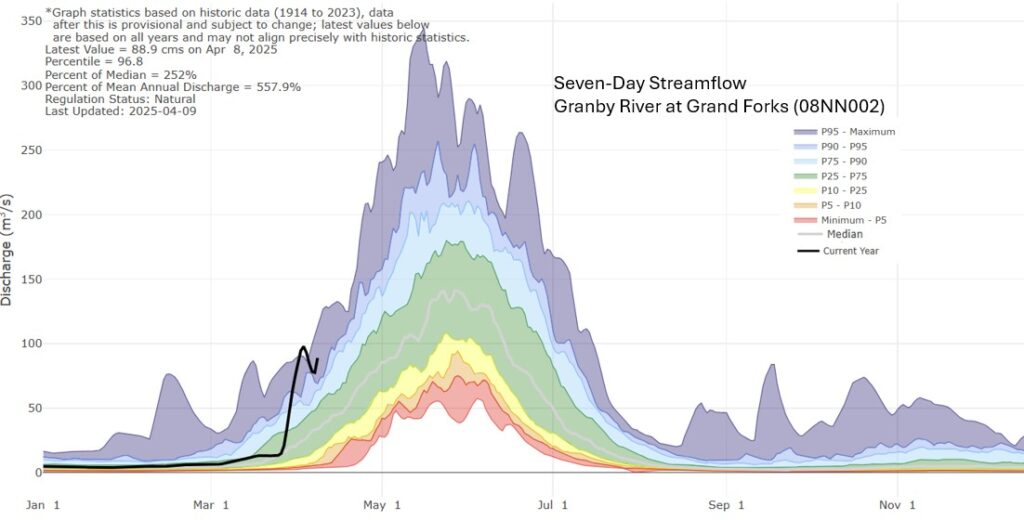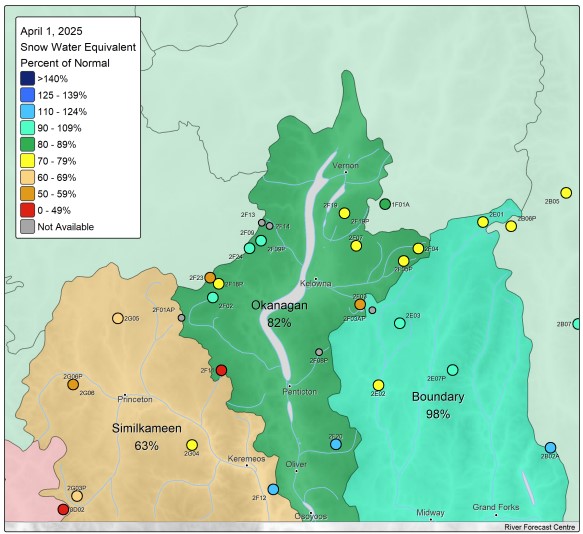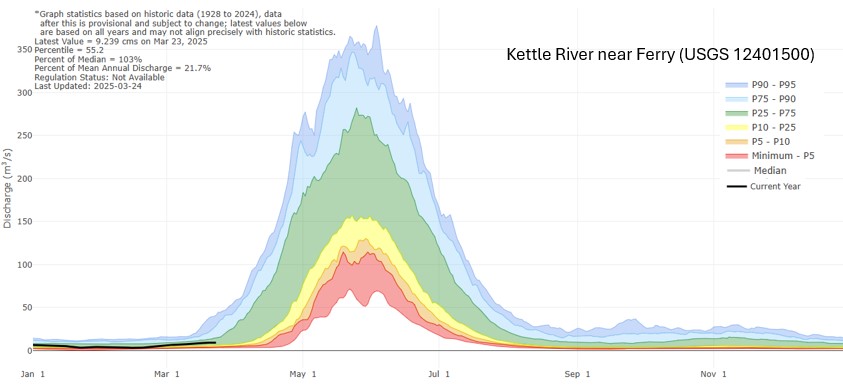The Province has elevated the drought level of the Kettle and Okanagan watersheds to Level 3, highlighting the ongoing dry conditions affecting both areas. Rainfall during the past week has been minimal, with most stations recording only 2mm or less; however, the southern half has marginally benefited from the accumulated 20-35mm of rain over the last 30 days. Despite this, Agriculture Canada reports continue to show very dry soil moisture levels throughout the Boundary. Are you experiencing similar conditions in your area? Have you noticed the low water levels in local streams, even the Kettle River at Laurier is getting close to it’s minimum recorded level for this time of year (image below).
It’s important to note that Provincial drought levels no longer reflect weather forecasts or impacts. Local forecasts (images below), suggest continued dry conditions with minimal rainfall expected over the coming two weeks (SpotWx) and for the next three months (EnviroCanada).
We urge everyone to remain WaterWise and FireSmart:
• Regularly check and repair any water leaks, such as a leaking toilet, irrigation line, etc
• Water your gardens during cooler parts of the day.
• Use mulch to retain soil moisture and reduce water needs.
![]() What are you doing to help ensure water remains available for all species in these watersheds.
What are you doing to help ensure water remains available for all species in these watersheds. ![]() Share your water-saving tips and inspire others!
Share your water-saving tips and inspire others!![]()
Provincial Drought Levels: https://droughtportal.gov.bc.ca/
For more information on the change to the Provincial drought level rating system, please see: https://kettleriver.ca/2025/07/drought-level-reframed/
NOTE: Local Conditions updates will resume at this site in August. Check out the Provincial Drought Portal https://droughtportal.gov.bc.ca/ for information on the Kettle and Okanagan watersheds.





Forecast for the next 10 days: Grand Forks/Greenwood & Rock Creek/Westbridge


















